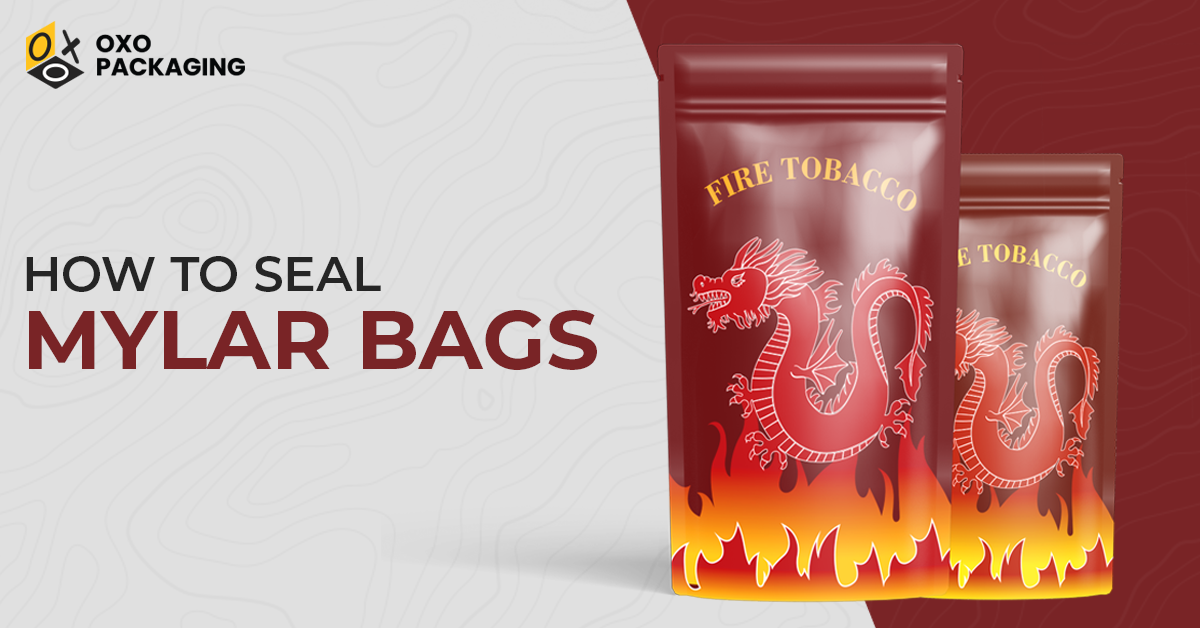How to Seal Mylar Bags Properly: A Complete Step By Step Guide

Have you ever wondered how to keep your food products fresh for longer? You are in the right place if this question has crossed your mind. In this blog, we will answer this common concern and more.
We will be delving into the process of how to seal Mylar bags. Whether you are an industrialist, a homesteader, or simply someone who wants to ensure their snacks stay crisp, this guide will equip you with the knowledge and skills to seal Mylar bags like a pro.
So, let's begin the learning…
How to Seal Mylar Bags?
Sealing Mylar bags properly is essential to preserving and protecting the contents inside. Mylar bags are commonly used for long-term food storage, electronics packaging, and more.
Here is a general guide on how to seal Mylar bags effectively:
Materials Needed
To seal mylar bags, you need a heat sealer, oxygen absorbers, the mylar bags themselves, and the items you want to store. Consider the details of the required materials here:
Mylar Bags:
These should be of good quality and an appropriate size of mylar bags for your items. You can choose mylar bag manufacturing from either PET or bioplastic.
Heat Sealer:
An impulse heat sealer is commonly used for Mylar bags. This tool generates heat to melt the bag's edges together, creating an airtight seal.
Oxygen Absorbers (if applicable):
These absorbers help remove oxygen from the bag, extending the shelf life of food items. Otherwise, your food items get contaminated upon exposure to oxygen.
Choose Essential Tools to Seal Mylar Bags
If you are looking for a budget-friendly mylar bag sealing tool, a hair straightener, or a cloth iron seal, it works perfectly for small pouches and zipper tops. For fast, repeatable sealing, use an impulse sealer or a heat sealer.
Steps
To seal the mylar bag, first, you must know what is a mylar bag and how its structures work. Mylar bags typically have different plastic layers inside and out and a middle layer of aluminum. It is primarily used for long-term food storage.
The process of sealing the Mylar packaging bags consists of five main steps. Below, we have described them in detail for your better understanding.
- Prepare Your Items: Ensure that your stored items are clean, dry, and moisture-free. If you store food, consider using oxygen absorbers to prevent spoilage and maintain freshness. Place the oxygen absorbers in the bag before sealing.
- Open the Mylar Bag: Open the top of the Mylar bag and place the items you want to store inside. Make sure to fill the bag evenly to allow space for sealing.
Fold Over the Top: Fold the top portion of the Mylar bag down to create a clean and flat surface for sealing. This also prevents any potential contamination of the sealing area.
Use the Heat Sealer
This step explains how to heat seal mylar bags. It is the most essential part of the procedure.
- Turn on your heat sealer and allow it to reach the appropriate sealing temperature. Refer to the manufacturer's instructions for the recommended temperature setting.
- Position the folded portion of the Mylar bag between the heat-sealing bars of the sealer, ensuring that you have a bit of extra material beyond the sealing area.
- Press down on the heat sealer's arm or lever to apply heat and pressure. Hold it down for a few seconds (the exact time will depend on the heat sealer and bag thickness).
This melts the Mylar material together, creating a secure seal.
Businesses selling food items are also concerned about how to seal Mylar food storage bags. In that case, use the same procedure mentioned in this step.
- Release the Heat Sealer: Once you have sealed the Mylar bag, release the arm or lever of the heat sealer and allow the seal to cool for a few seconds. This ensures that the seal sets properly.
- Check the Seal: To ensure that the sealed area is secure, gently tug on it. The seal should be airtight and not easily separated. If the seal is unsatisfactory, reseal the bag using the heat sealer.
- Label and Store: Label the Mylar bag with the contents and the packaging date using a marker. Store the sealed Mylar bags in a cool, dry, and dark place to maximize their effectiveness.
Remember, practice makes perfect. If you are new to sealing Mylar bags, it's a good idea to practice on a few empty bags before sealing bags with valuable contents. Also, always follow the instructions provided by the manufacturer of your heat sealer for the best results.
Tips to Consider for Sealing Mylar Bags Effectively
When you seal Mylar bags, ensure you apply even pressure on all sides. And keep powder away from the seam. Don’t forget to test settings on a scrap strip first. Because iron may get excessively hot if the corner is wavy.
Ensure you prevent the seal from peeling open by increasing the time of heating. The corners of bags get contaminated with residue, which results in leaks. To prevent leaks, wipe the inner corner of the top before sealing.
How to Use Mylar Bags?
Mylar packaging bags have many potential uses:
- Long-term food storage for emergencies
- Keeping hold of priceless paper documents, such as mortgage documents, court documents, or cash
- Protecting books, magazines, comics, sports programs, postcards, and photos
- Camping and hiking
- Storage of clothing and shoes for a long time
- Medium-term storage of herbs and spices
- Packaging products such as tea and coffee for sale
- Medical and pharmaceutical items
- Packaging car/auto parts
- Preventing corrosion of ferrous objects, such as nuts and bolts
- Storing CDs, vinyl, and DVDs
- Firearms and weapons storage (paired with desiccant/silica gel packs that absorb moisture, not oxygen)
- Holiday storage
- Packing for vacation
How to Print on Mylar Bags?
Printing on Mylar bags can be a bit challenging due to their slick and non-porous surface. However, OXO Packaging is here to guide you every step of the way.
Here is a general guide on how to print on Mylar bags:
Method 1: Direct Printing
The direct printing method consists of eight steps. These steps include:
Choose the Right Printer: Select a printer compatible with Mylar material. Inkjet printers are often used for this purpose. However, you might need a printer that supports specialty inks and settings for proper adhesion.
- Prepare the Artwork: Use graphic design software to create or prepare the design you want to print on the Mylar bag. Make sure the design is of high resolution and appropriate for the size of the bag.
- Test Printing: Before printing on the actual Mylar bags, do a test print on a regular sheet of paper. This allows you to ensure that the design layout and colors are correct.
- Adjust Printer Settings: Configure the printer settings for Mylar printing. You might need to adjust settings like paper type, print quality, and color calibration. Refer to your printer's manual for guidance.
- Load Mylar Bags: Load a single Mylar bag into the printer, ensuring it's properly aligned to avoid misprints.
- Print Carefully: Start the printing process. Pay close attention to the printing process to ensure that the ink is adhering correctly to the Mylar surface.
- Dry Thoroughly: After printing, allow the Mylar bags to dry completely. This can take some time due to the non-porous nature of the material.
- Handle with Care: Mylar bags are delicate, so handle them gently to prevent smudging or scratching the printed design.
Method 2: Label Printing
If direct printing doesn't work well for your setup, consider printing labels and attaching them to the Mylar bags.
Here is how:
- Print Labels: Print your design onto label sheets using a standard printer. Label sheets come in various sizes, so choose a size that fits well on your Mylar bags.
- Cut Labels: Carefully cut out the printed labels from the label sheets.
- Peel and Stick: Peel off the backing of the labels and stick them onto the Mylar bags. Make sure they are applied smoothly and evenly.
- Press Firmly: After sticking the labels, press them firmly to ensure proper adhesion.
Considerations:
There are four main factors that you need to consider carefully while printing on the Mylar pouches:
- Ink Adhesion: Mylar's non-porous surface can make it challenging for ink to adhere. Consider using specialty inks (water-based) designed for plastic surfaces.
- Smudging of Ink: On Mylar, Ink may take longer to dry. Handle the bags carefully to avoid smudging while the ink is still wet.
- Printer Compatibility: Ensure your printer is capable of handling Mylar. Some printers might not be suitable due to the material's characteristics.
- Design Compatibility: Due to the surface texture of Mylar, complex designs, fine text, and small details may not reproduce accurately.
Before proceeding with any method, test your chosen printer, inks, and techniques on a few Mylar bags to ensure the desired results.
Avoid Common Mistakes While Sealing Mylar Bags
Even if a small error comes along the bag’s corner, it can cause the airtight seal to rupture. To avoid it, pay attention following factors:
- The presence of flour or spice powder on the inner lip causes leaks. Hence, wipe with powder on the seam before sealing.
- If your bag pinsholes are too hot or cool, they create a weak bond. So, test scrap strips to retain the sealing of mylar bag.
- Leave optimal space at the top of the bag to press the sealer flat effectively. Leave about 4 to 6 inches of headspace.
We Are Here to Help You!
Anyone working in the following industries, including food, health, beauty, and retail, must master adequately sealing Mylar bags. Remember that practice is essential if you want to become proficient at sealing and printing on Mylar bags. Your technique will improve with practice, and you will achieve consistent, outstanding results. We hope this guide on how to seal Mylar bags was helpful for you. You are now prepared to start your journey toward mastering the skill of adequately sealing Mylar bags.
Lastly, if you are looking for where to buy mylar bags for your products, OXO Packaging is here to help. We will provide you with top-notch custom mylar packaging solutions at wholesale prices.Contact us today to package your goods in the best possible manner. Happy sealing and packaging!
You can seal a Mylar bag with an iron using clothes iron or hair-straghtening flat iron. For sealing, set temperature of to a high and dry heat setting while squeezing excessive air out of the bag. And quickly run the heated iron across the top corner of the bag, overlapping it by about an inch to form a seal.
Your Mylar bag is still puffy because the seal failed or oxygen absorber was faulty or not sturdy enough for contents. It can aslo be puffy if the contents are not completely dry, if bag opening was pinched during sealing or if bag was not properly sealed.
For long-term storage, a 7-mil or thicker mylar bag is best. It provides the necessary protection against light, moisture, and oxygen for sensitive items. While 4- to 5-mil bags are adequate for shorter-term storage or less sensitive items like certain dry goods.
You can heat-seal Mylar bags with a FoodSaver, but a standard one cannot effectively vacuum seal them due to their smooth surface. To vacuum seal, you must use a workaround like placing textured FoodSaver bag strips inside to create air channels for the machine to pull from.




